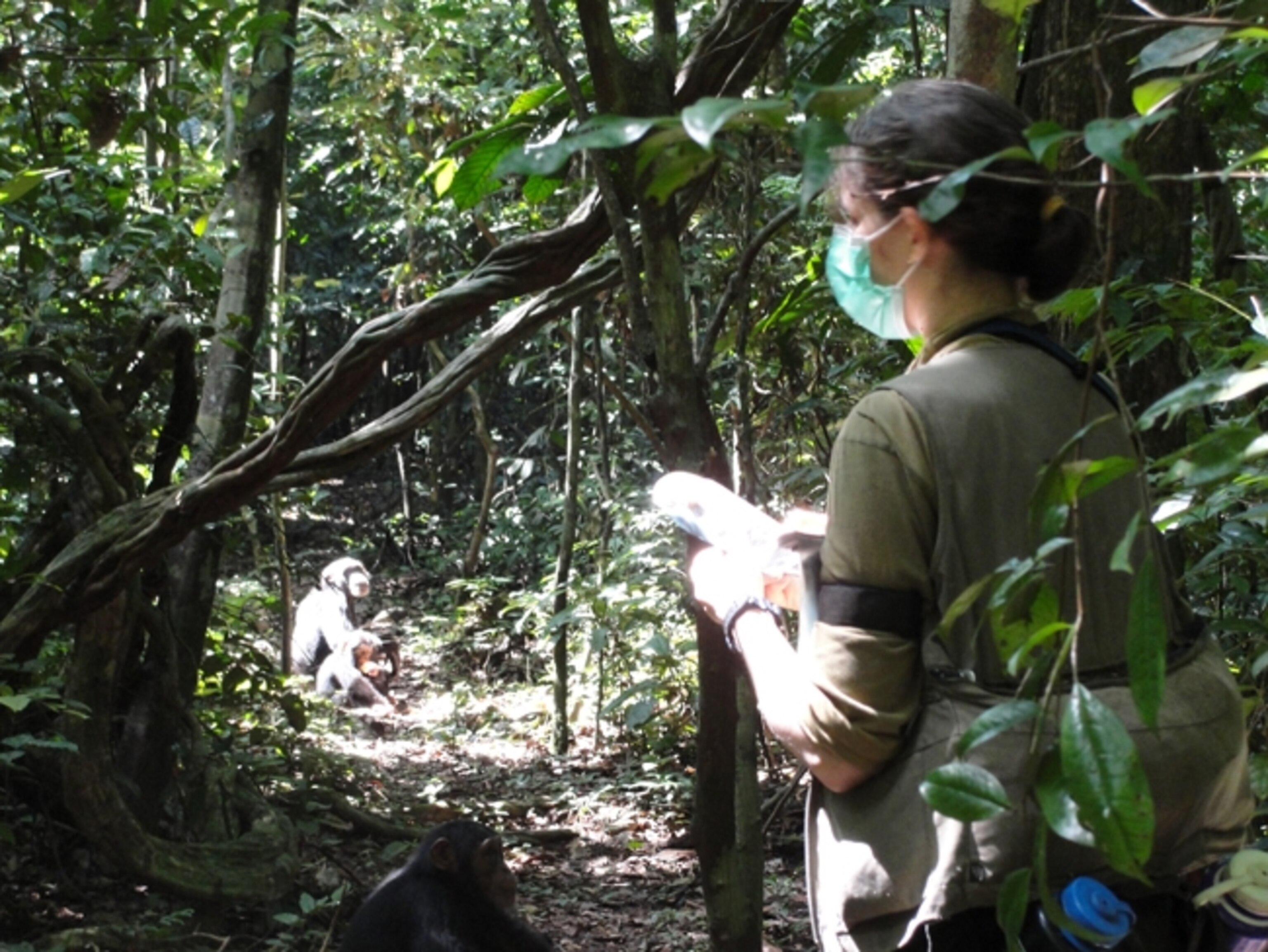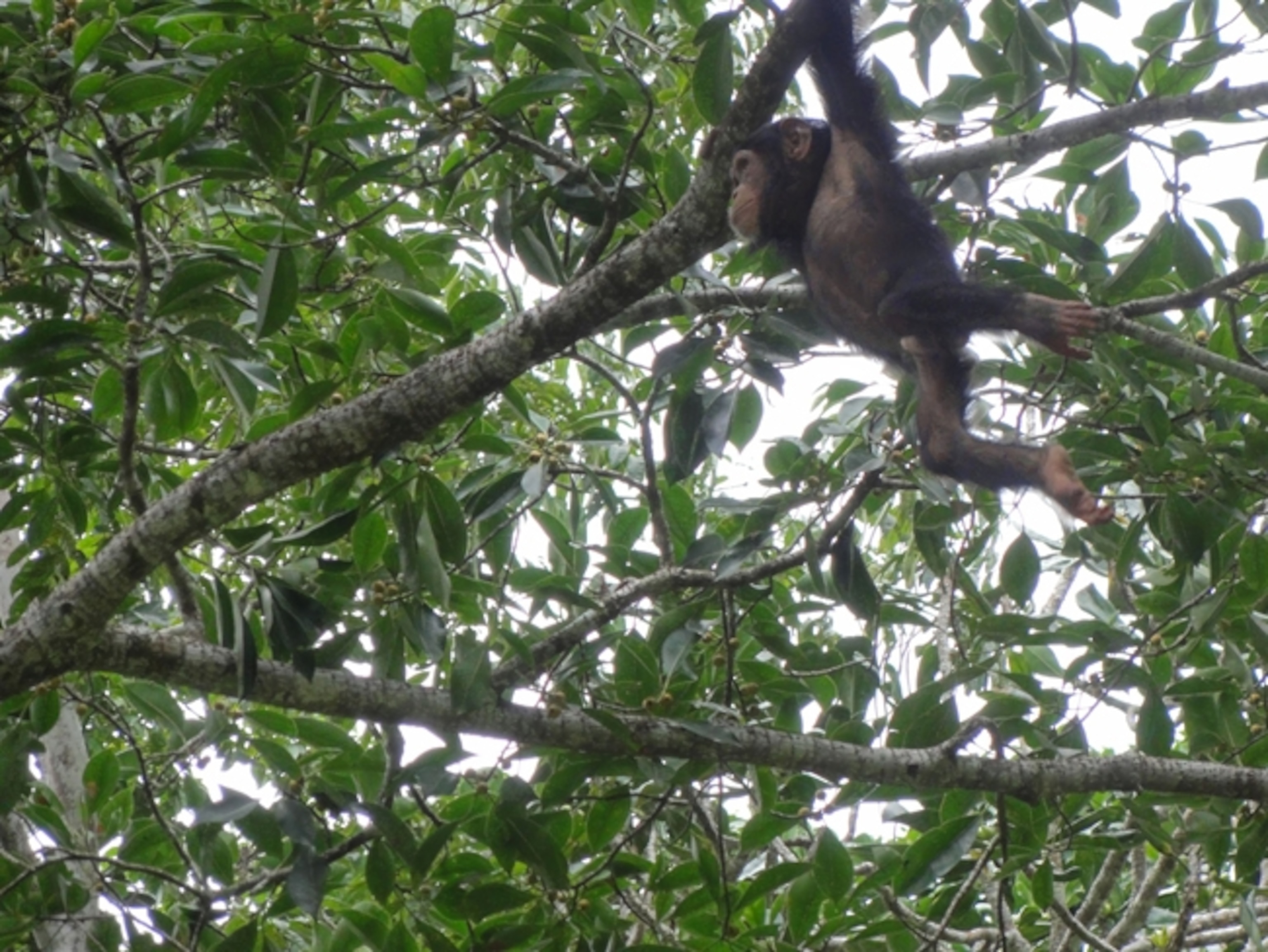
The Early Chimp Gets The Fig
At my supermarket, I can buy strawberries in winter and pears in summer. Every fruit is available all year round, and the shelves are always stocked. Thanks to this constant glut, it’s easy to forget what a patchy and fleeting resource fruit can be. Even in a tropical rainforest—a world of supposed abundance—animals might have to walk for miles to find the one tree in every 500 that has ripe fruit on it. That tree might only carry ripe fruit for a few weeks, and any juicy baubles would be rotten or eaten within days.
So fruit-eating animals like chimpanzees need good memories and flexible brains. They need to remember where the best trees are and when they are likely to bear fruit, and they must adjust their behaviour accordingly. Karline Janmaat from the Max Planck Institute for Evolutionary Anthropology compares fruit-eating to a game of chess, “in which the pieces do not only change position but also continuously change their state, with intervals that can last months for some yet only hours for others.”
She has also found that wild chimps are masters of this game. They get up earlier in the morning, often before the sun’s first rays, if they plan on eating short-lived fruits like figs. And they build the previous night’s nests in the direction of these trees, so they can get a headstart on any competitors.
“The results are entirely consistent with the idea that the chimps are not simply prisoners of the present, but think about what to do next, and do so a while in advance,” says Carel van Schaik, who was not involved with the study. And by planning their future activities, they can compensate for the fluctuations in their food supply. By applying their considerable brains, they keep their guts full.
Janmaat discovered these abilities by following a group of chimps in the Ivory Coast’s Tai National Park. She would track the animals during the day, mark where they slept at night, and return before the next sunrise to watch them get up. It was a punishing schedule, but it yielded an important observation: sometimes, the chimps descended to the forest floor while it was still dark.
They don’t normally do that, and they were extremely skittish. After all, these are dangerous forests; one of the chimps had recently lost a son to a leopard attack. “These chimps are very used to humans and they never look at you,” says Janmaat. “But during these moments, if I broke a branch, they’d look back immediately. I was really struck by that. They were taking risks.”
Why? When Janmaat followed these early-risers, she saw that they almost always headed for fig trees. Figs aren’t particularly nutritious, but they are only ripe for a short time. And since they are soft and unprotected, they attract a large variety of hungry birds, squirrels, and monkeys. So, only the early chimp gets the figs.

Janmaat and her colleague Simone Dagui Ban followed five of these chimps over 275 days, and collected a wealth of data about their habits and movements. They found that the females left their nests earlier in the morning when they were heading to eat figs, but only if the figs were far away from their nests. For other fruits, which aren’t so heavily contested, the chimps were more relaxed. They would get up later if the trees were further away. If they don’t need to arrive early, they don’t risk walking in the dark.
She also found that the chimps plan the location of their nests with tomorrow’s meals in mind. If they ate breakfast in a fig tree, you could draw a pretty straight line between that spot, the place where they slept, and the place where they dined on the previous night. If they ate other fruits for breakfast, their nesting locations were often off at an angle. If they knew they’d be shooting for figs, they positioned their nests en route. They must also have a really good map of the local fruit-bearing trees in their heads.
It’s very hard to explain these complicated patterns through simple rules. The chimps weren’t just drawn to the sight of figs, because they usually can’t see the trees they are travelling to. They weren’t drawn to smells either, or they would have got up earlier when fig trees were closest. They weren’t just moving according to ingrained patterns, because Janmaat never saw them sleeping and breakfasting in the same pair of trees twice. And other factors like temperature, rainfall, or the presence of males couldn’t explain the patterns in their behaviour.
The best explanation is that when figs are on the menu, chimps get up early to beat the breakfast rush. And when they have far to travel, they get up earlier. “They weigh up different types of information—not just what they were planning to eat, but where that food was,” says Janmaat.
“The work is vintage Karline Janmaat: very detailed, long-term and clever,” says van Schaik. “She is a great observer, in situations where experiments are extremely difficult or even impossible.”
Other scientists have found that captive apes can plan for the future by, for example, choosing tools that might come in handy later, saving tokens that they could later cash in for food, or even stockpiling stones to throw at annoying tourists. All of these examples are about tools. Using a tool is an obvious and dramatic way for an animal to show how clever it is. Getting up early seems mundane by comparison, but Janmaat argues that it is just as impressive. It’s a sophisticated way of getting food and beating the competition, and one that demands intelligence.

Other apes might share this skill: just last year, van Schaik showed that orang utans communicate their travel plans to rivals and mates the night before, another sign of forward-planning. “Gradually, the burden of evidence is shifting toward the conclusion that at least great apes engage in mental time travel on a routine basis in their normal everyday lives,” he says.
This ability may have been critical in our evolution. Some scientists have suggested that our vaunted smarts evolved to help us cope with scarce and patchy food like fruit. For example, larger-brained primates tend to eat a steadier level of calories all year round even though they eat highly seasonal foods. That may be because they have mental tricks like good memory, the ability to make tools, and flexibility, which allow them to find meals at all times. Janmaat’s study suggests that planning is part of that package.
Unfortunately, she thinks that studies like these may be harder and harder to do. “Sometimes, we wouldn’t find females in the morning because they had to shift their nest due to the gunshots of illegal hunters,” she says. “This may have been one of the last chimpanzee populations that could be studied in West Africa. Our opportunities to gain insight in our own evolutionary history through the observations of the behaviours of our closest relatives are decreasing at rapid speed.” And there’s no way for chimps to plan around that. Only we can.
Reference: Janmaat, Polansky, Ban & Boesch. 2014. Wild chimpanzees plan their breakfast time, type, and location. PNAS http://dx.doi.org/10.1073/pnas.1407524111
